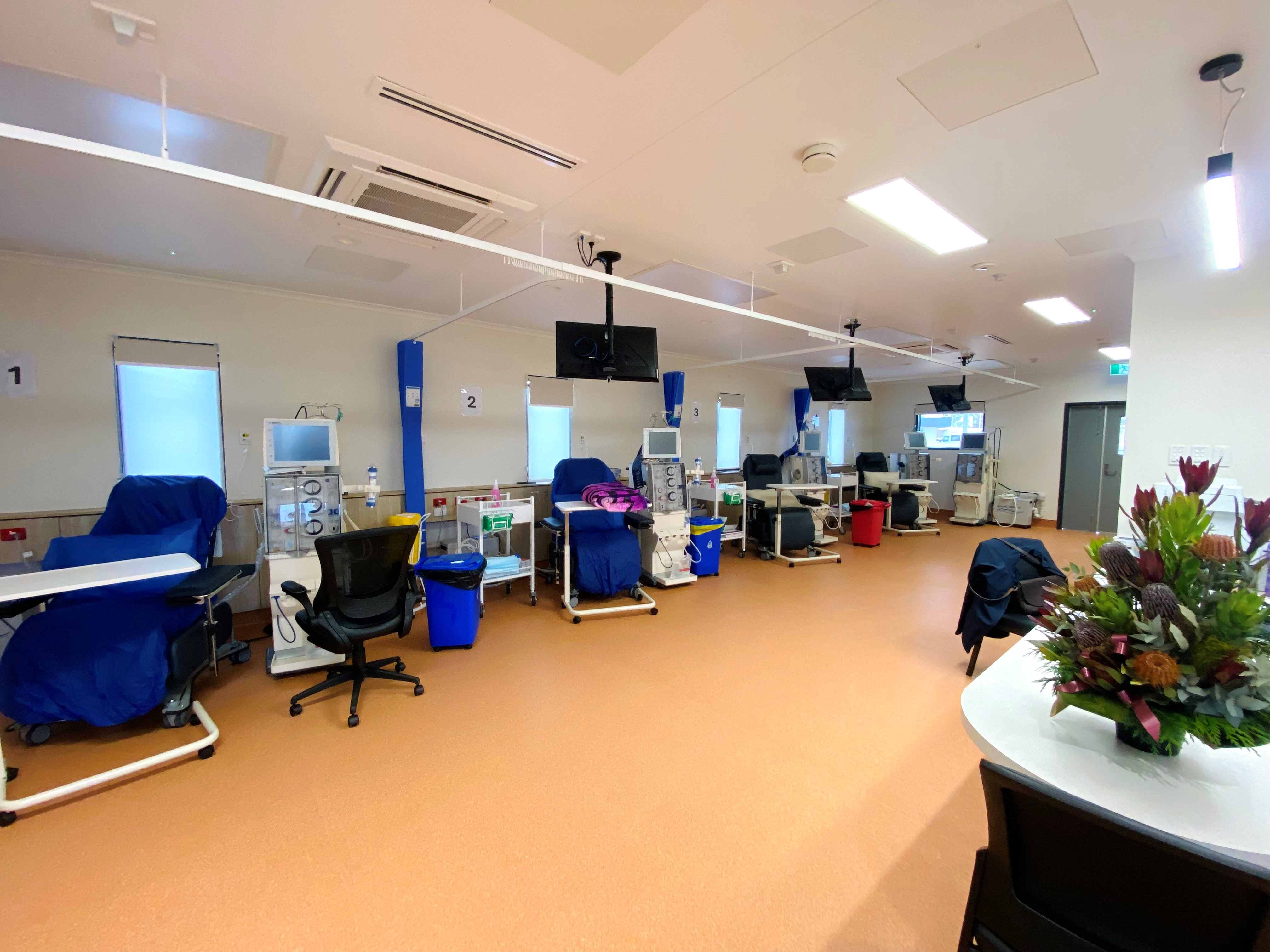As part of the Better Renal Services for First Nations People Budget, the new 4-chair dialysis unit in the remote South Australian (SA) town of Coober Pedy opened in June 2024.
So far, the clinic has had a profound impact, enabling patients to return home and reconnect with their families. The clinic is operated by the Western Desert Nganampa Walytja Palyantjaku Tjutaku Aboriginal Corporation, widely known as Purple House. Purple House are an Aboriginal Community Controlled organisation who provide dialysis on Country to 20 communities across SA, the Northern Territory, and Western Australia.
Dialysis is an essential treatment for individuals with end-stage kidney disease, which otherwise can only be managed through a kidney transplant. Many Coober Pedy residents were having to move hundreds of kilometres away from their family to be able to receive Dialysis treatment. In 2018 the Coober Pedy community approached Purple House, asking for help to establish a dialysis clinic so they could get their people home. Many community meetings were held to discuss the establishment of the clinic, fundraising opportunities and the cultural considerations to ensure the clinic met the community’s needs.
After many years of hard work, consultation and thanks to fundraising, partnerships, philanthropy and the support of the SA government and the Better Renal Services for First Nations People Budget from the Commonwealth Government the clinic was able to become a reality, with its official opening in June 2024.
The establishment of the Coober Pedy dialysis clinic allows people with kidney disease to receive lifesaving care on Country, close to their families. This minimises the need for relocation to regional or metropolitan areas, saving many hours in travel and reducing stress. Moreover, proximity to home ensures more consistent attendance, ultimately resulting in better health outcomes.
Patient Stories
David relocated to Port Augusta 7 years ago for dialysis treatment, which prevented him from returning to Coober Pedy or seeing his grandchildren. Since the clinic opened, David has been back for 2 months and says he is very happy to be home. Living with his adult grandchildren, David now has the ability to visit his daughter in Indulkana, go camping, and participate in local meetings as an Elder. His return has provided crucial support for his grandchildren, who have faced challenges during his absence.
Jennifer (pictured) and her husband George were instrumental advocates for the establishment of the Coober Pedy dialysis unit. Jennifer had to relocate to Whyalla 8 years ago to receive treatment, living with her daughter. At 71 years old and increasingly frail, Jennifer has finally been able to return to Coober Pedy, her birthplace, to spend her remaining years. Reunited with her husband, 2 sons, and grandchildren, Jennifer loves the opportunity to share her stories with younger generations. She is looking forward to celebrating Christmas in Coober Pedy, which will be particularly meaningful for her and her family.
Tommy, who left Coober Pedy 3 years ago in his late 20s due to health complications, including dialysis and a leg amputation, was forced to live in National Disability Insurance Scheme accommodation in Adelaide, far from his cultural connections. Now back in Coober Pedy, Tommy receives regular support from his Uncle Roy (pictured with Tommy), who accompanies him on trips to reconnect with Country. Roy also encourages Tommy to participate in activities, such as bush camping and playing the drums in a church band. Tommy is excited to be able to spend Christmas with family and friends in Coober Pedy.
Find out more about the services offered by Purple House.

Pictured: Four chairs in the Coober Pedy Dialysis unit